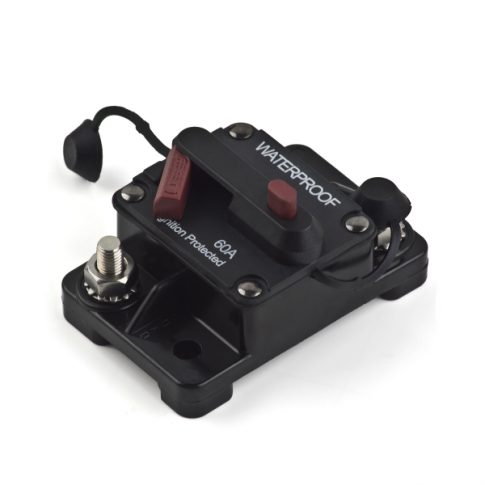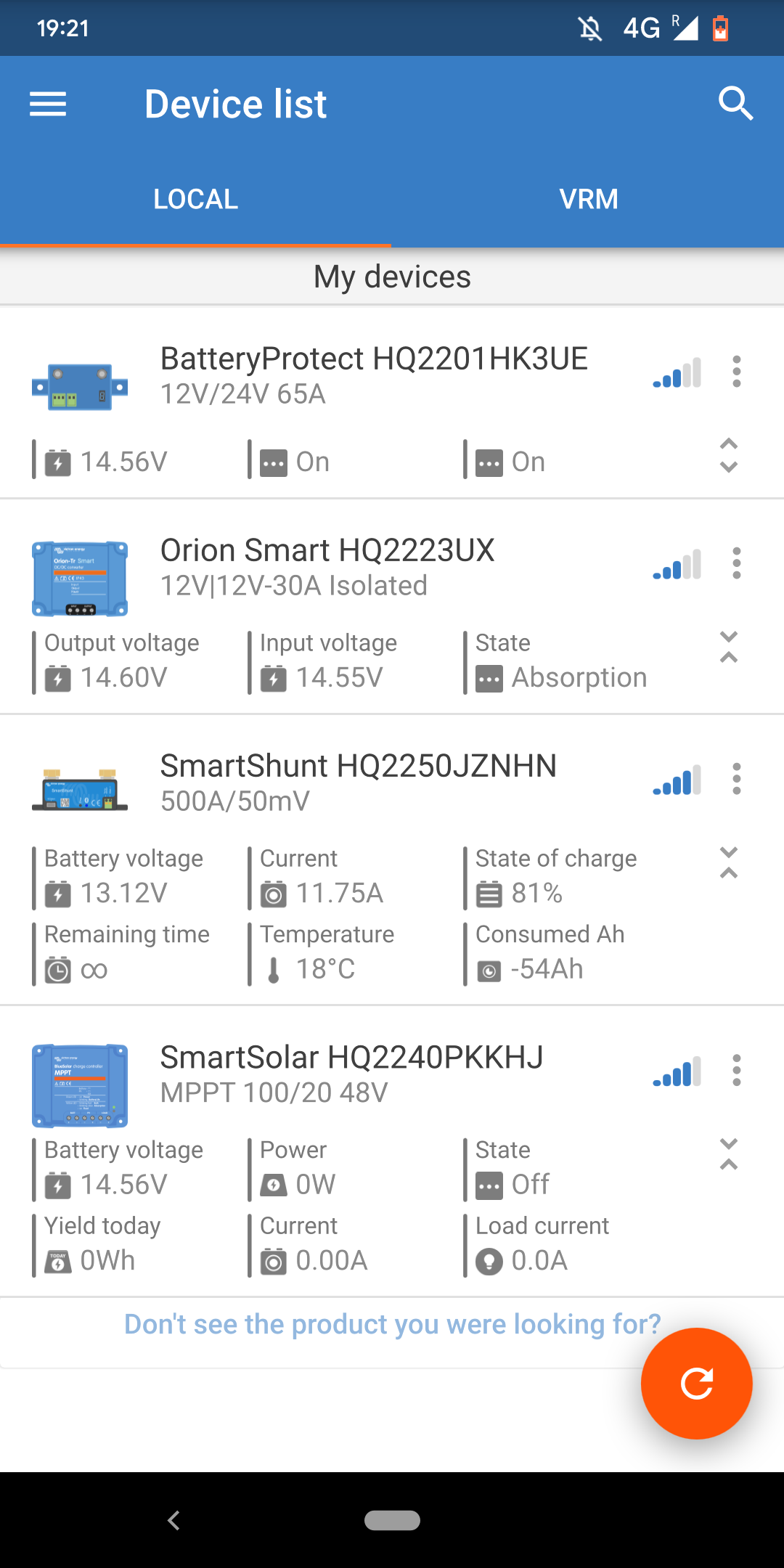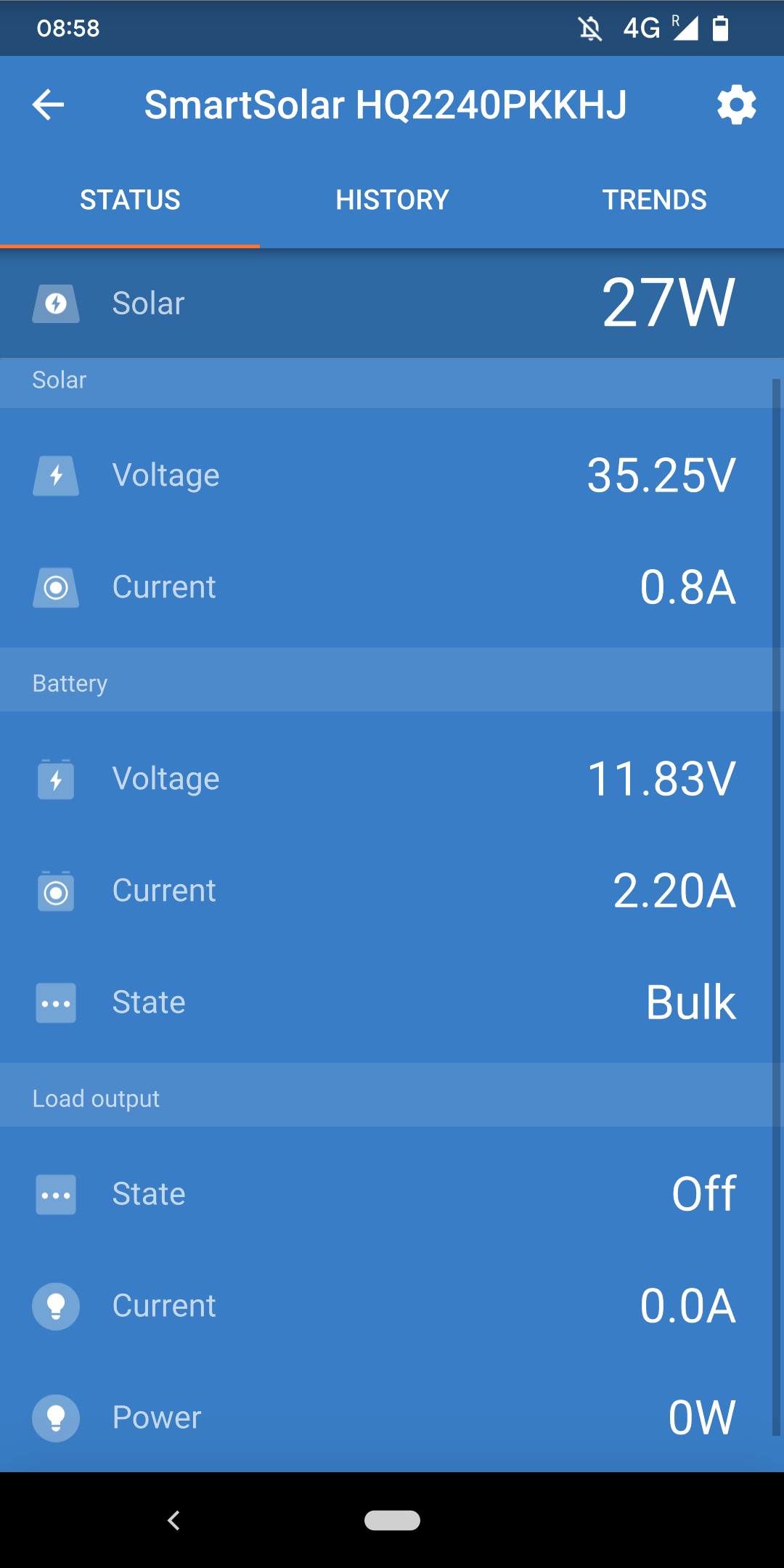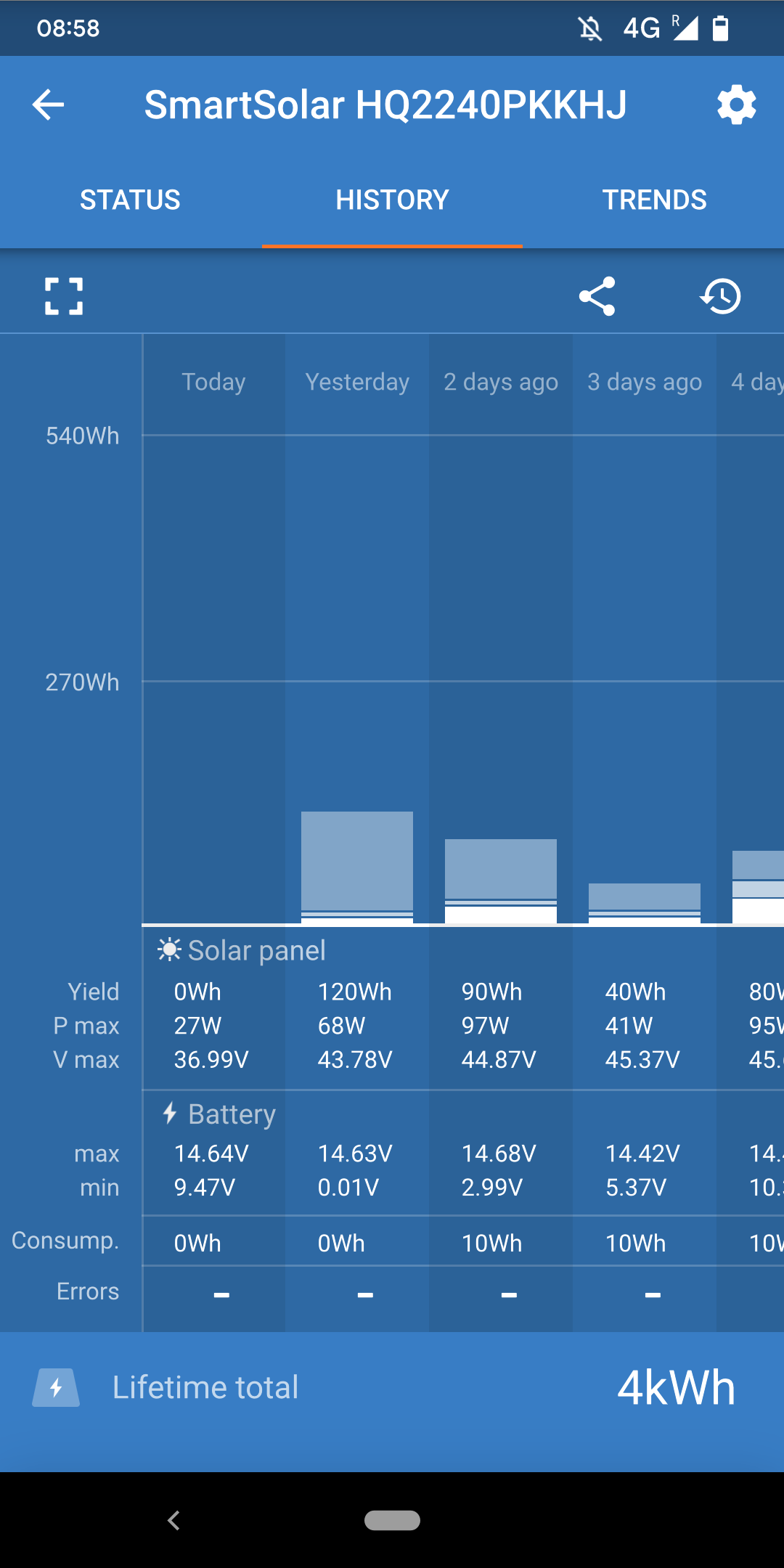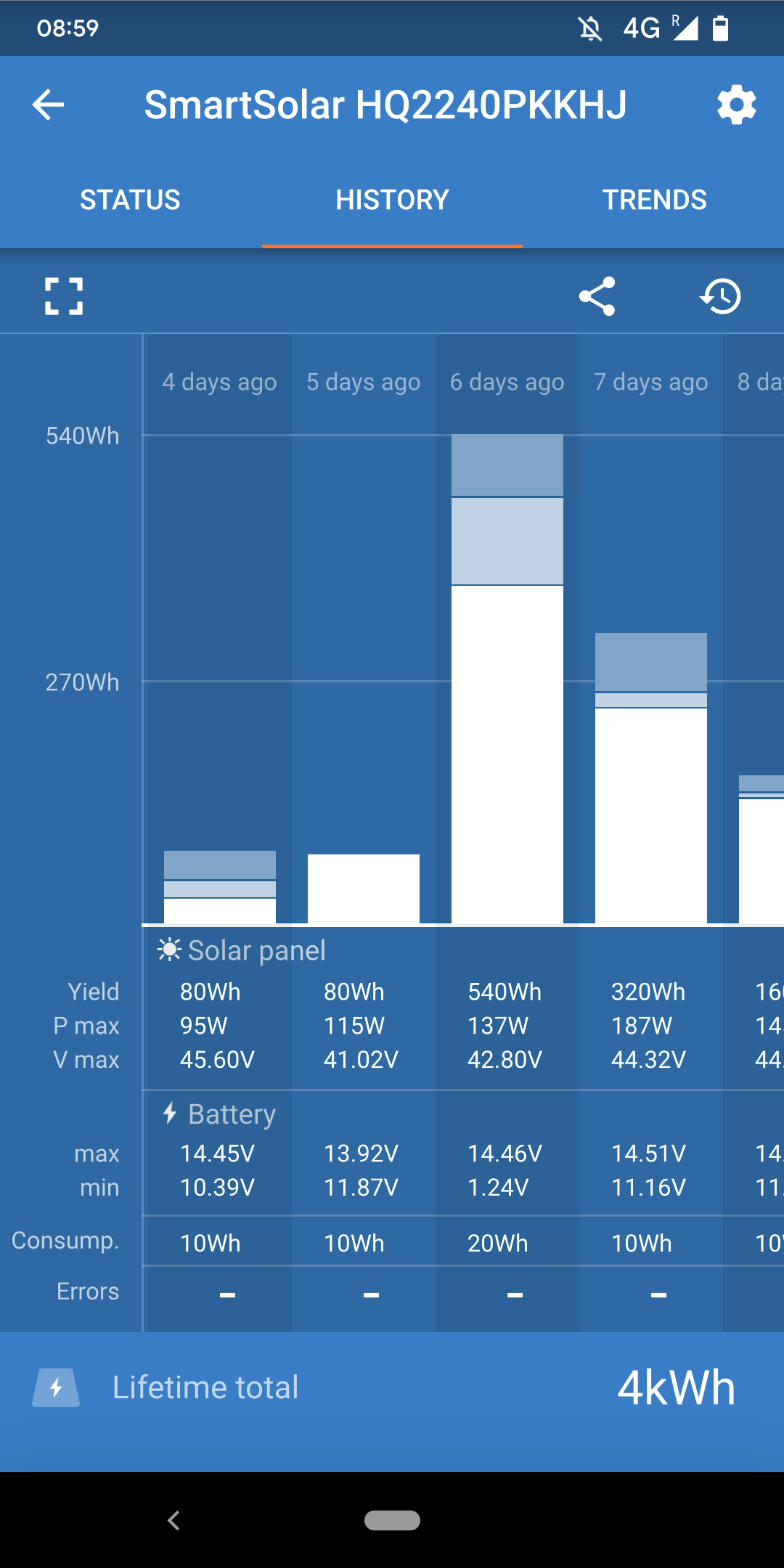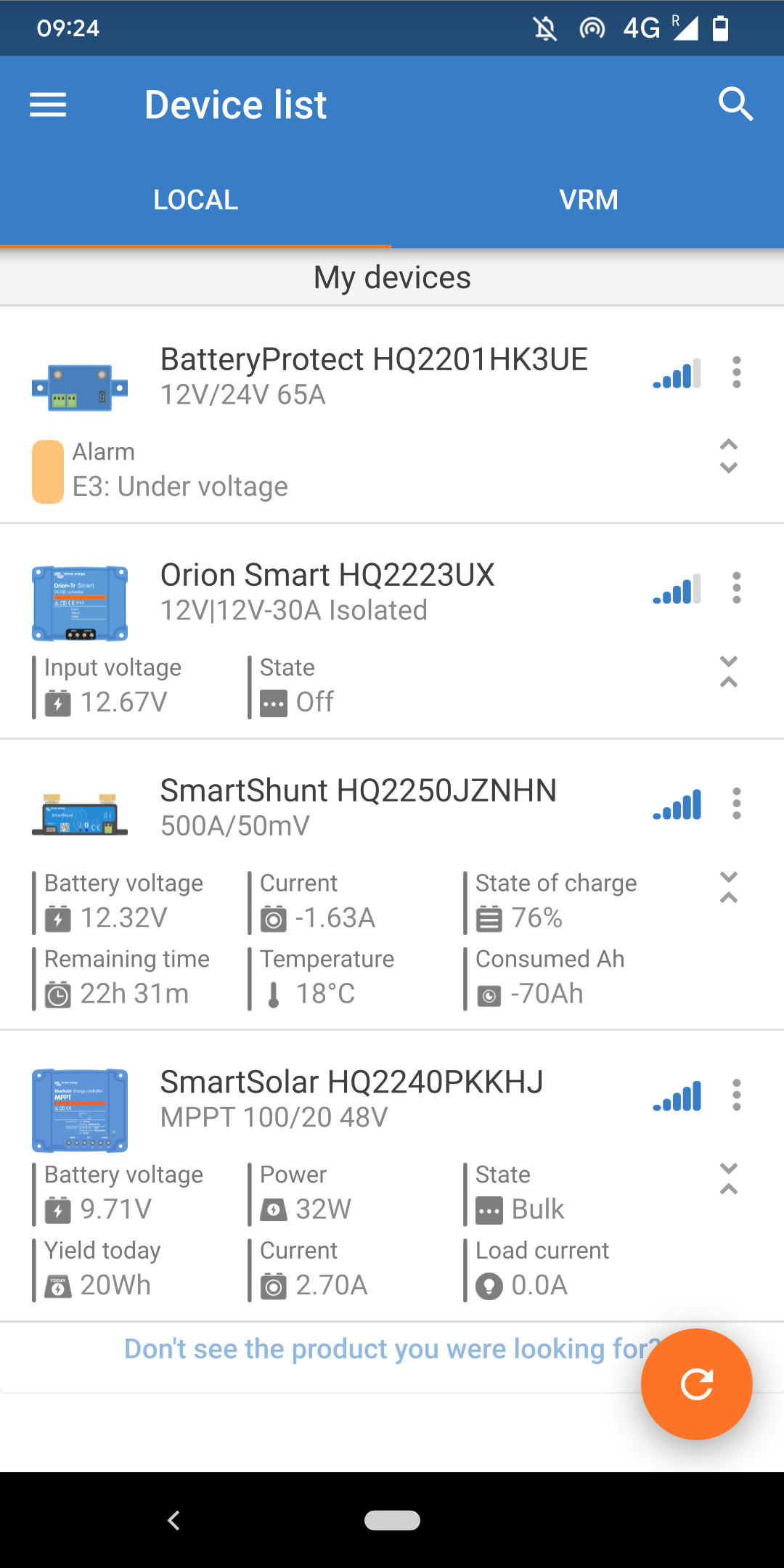I have a recently installed victron system in my Citroen Relay 2021 but have come across some issues with charging in last few days.
Our problem was noticed when battery protect started regularly disconnecting loads due to E3 (under voltage) at any SOC below 85%. It seems a cause of this is Orion and Solar don't seem to be sending much if any charge to the leisure Batteries.
Despite driving multiple hours in sunny conditions in Spain both the Orion and Solar stay in absorption (we are on 70% battery) or float despite having low battery SOC.
I've tested the starter battery and orion with the multimeter and with engine off all values are aligned. However with the engine on I see around a 0.5 drop on V between battery and input ports. I've tested resistance across fuses and that doesn't seem to be the issue.
I'm a bit clueless as to what to do to check the solar though.
My only thoughts at the moment are the default settings in the victron app aren't correct for the alternator / Citroen relay Van??
Any advice or help on this from the community would be massively appreciated
Thanks
Gus

